Kingsgrove Branch:
Schnap Electric Products Blog
Schnap Electric Products Blog Posts
SAL LED Downlight
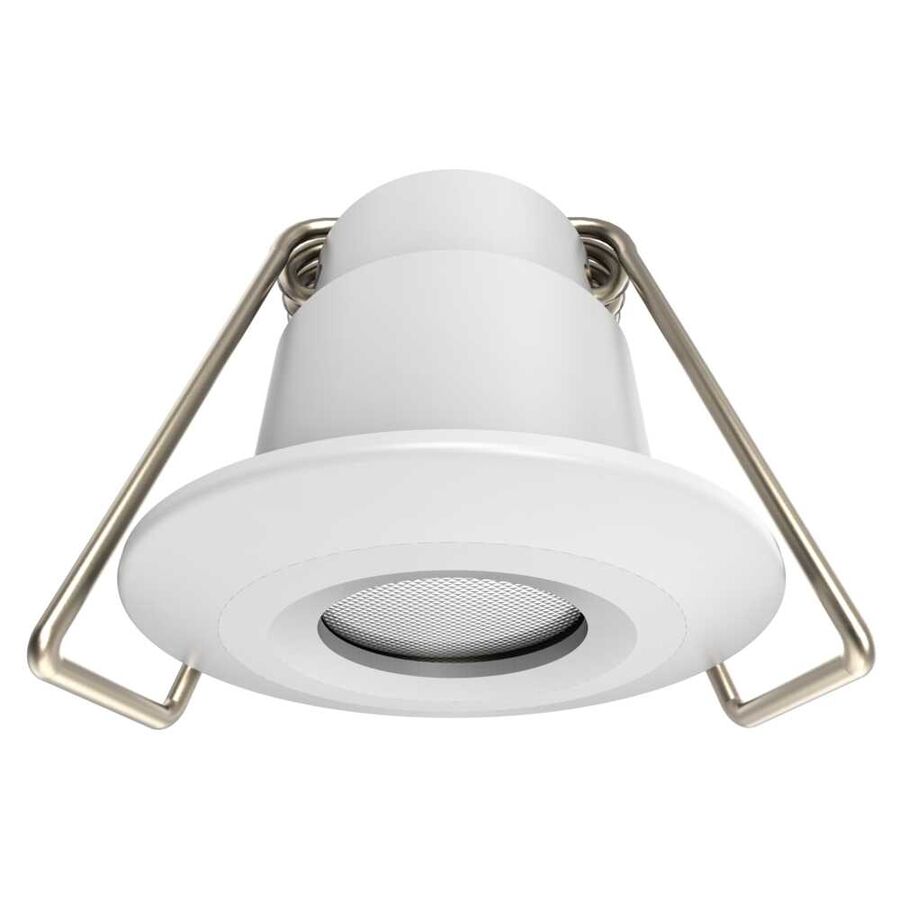
G'day! If you're in the thick of a reno or a new build, you know that choosing the right lighting is fair dinkum crucial. You want something that looks schmick, saves you a motza on your power bills, and isn't going to cark it after five minutes.
You could go to the big hardware store and grab a cheap, no-name fitting, but have you ever wondered what the pros use? The licensed electricians who do this all day, every day? On worksites across Australia, you'll see one trade brand again and again: SAL.
A SAL LED downlight has become a proper staple, the go-to choice for tradies who need a reliable, compliant, and high-quality fitting that won't let them down.
Why Do the Pros Trust SAL?
SAL National (Sunny Australia Lighting) is a major player that focuses on the professional trade. You're not just buying a light; you're buying a piece of trade-quality kit. Here's why that matters:
- Rock-Solid Reliability: Tradies can't afford callbacks. They need a SAL LED downlight because they're built tough with quality components (like good drivers and LED chips) that are made to last for donkey's years.
- 100% Aussie Compliant: This is the big one. All SAL gear is rigorously tested to meet our strict Australian Standards (AS/NZS 3000). This isn't just a suggestion; it's a non-negotiable for safety.
- Packed with Pro Features: SAL fittings are designed for installers. They're often easier to wire up, more robust, and have the features that pros actually need.
The Ripper Features of a Modern SAL LED Downlight
When you get a SAL LED downlight from a proper electrical wholesaler, you're getting a fitting with clever, modern tech.
1. The IC-4 Rating (The Must-Have Safety Feature)
This is the most important feature, mate. An IC-4 rating (or IC-F) means the downlight is certified safe to be completely covered by your ceiling insulation. Why does this matter?
- It Stops Fires: An old, unrated downlight can get stinking hot and could start a fire if it's covered by insulation.
- It Stops Draughts: It means you can have a properly insulated ceiling without big, wasteful gaps around your lights, saving you a fortune on your heating and cooling bills.
2. Tri-Colour (CCT Selectable)
This is a bloody brilliant invention. "Tri-Colour" means there's a little switch on the back of the downlight. This lets your licensed electrician choose the colour of the white light during installation:
- Warm White (3000K): Cosy and inviting. Perfect for bedrooms and living rooms.
- Cool White (4000K): Crisp and clear. The go-to for kitchens, laundries, and home offices.
- Daylight (5000K+): A very bright, blue-white. Great for garages or workshops. It means you can use the same fitting throughout the house, which makes life easier for everyone.
The CRITICAL Safety Warning: This is 100% NOT a DIY Job!
Righto, this is the most important part of the whole article, so listen up. You might be handy with the tools, but you cannot install or replace a SAL LED downlight yourself.
This isn't a plug-in lamp, mate. It's a "hardwired" fitting that connects directly to your home's 240V mains power. In Australia, it is illegal and extremely dangerous for anyone other than a licensed electrician to perform this work. A simple mistake can lead to a fatal electric shock or a house fire, and it will void your home insurance in a heartbeat. Don't be a galah.
A Professional Job Needs Professional Gear
A licensed electrician will always use high-quality, trade-grade fittings to make sure the job is safe and will last. They won't risk their reputation on a cheap, flimsy downlight; they get their gear from a trusted electrical wholesaler because they know it's genuine and compliant.
As one of Australia's most comprehensive electrical wholesaler and supplier networks, Schnap Electric Products stocks the lot for the professional installer. They've got a massive range of high-quality SAL LED downlight models, including the popular IC-4 rated and Tri-Colour options. On top of that, they provide all the compliant wiring, switches, and circuit breakers that a qualified professional needs to get the job done right. For a job that's bright, safe, and built to last, the pros rely on a supplier like Schnap Electric.
LED Downlight Replacement
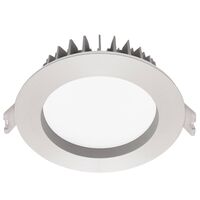
G'day! Have a squiz up at your ceiling. If your place is more than a few years old, you're probably looking at a ceiling full of old-school halogen downlights. You know the ones – they get stinking hot, chew through your power bill like there's no tomorrow, and are a fair dinkum pain when the globe blows.
If you're sick of the heat, the bills, and the daggy, yellowing fittings, it's bloody time for an LED downlight replacement. It's one of the best, smartest, and safest upgrades you can make to your Aussie home.
The Ripper Benefits: Why Bother with an Upgrade?
Swapping out those old halogens for modern, integrated LED downlights isn't just about a schmick new look. The advantages are massive, mate.
- Slashes Your Power Bill (A Proper Motza!): This is the big one. Old halogen globes are ridiculously inefficient. A single 50W halogen globe uses about 85% more power than a modern 7W LED that gives out the same amount of light. Add that up across 20 lights in your house, and the savings on your power bill are huge.
- Massive Safety Upgrade: This is non-negotiable. Old halogen downlights run at temperatures over 300°C. They are a notorious fire hazard, especially with ceiling insulation. A modern, IC-rated LED downlight runs cool to the touch. An LED downlight replacement is a massive safety upgrade for your family.
- Lasts for Donkey's Years: A quality LED fitting is often rated for 30,000 to 50,000 hours. That means you could install them and not have to think about changing a globe for 15 or 20 years. No more climbing a wobbly ladder!
- Modern Features: The new fittings are brilliant. You can get "Tri-Colour" models that let your installer choose between a cosy Warm White, a crisp Cool White, or a bright Daylight. Plus, most are fully dimmable (with the right dimmer, of course).
What's Actually Involved in an LED Downlight Replacement?
Righto, this is the bit that catches people out. An LED downlight replacement is not just changing a globe.
You can't just pop an LED globe into an old halogen fitting. Those old fittings have a "transformer" in the ceiling that's not designed for it, which can cause flickering and failures.
A proper replacement means your installer has to:
- Safely disconnect and remove the entire old fitting (the lamp holder and the transformer in the ceiling).
- Install a brand-new, fully integrated LED downlight fitting in its place.
The CRITICAL Safety Warning: This is 100% NOT a DIY Job!
This is the most important part of the whole article, so listen up. You might be handy with the tools, but you cannot do this job yourself. Don't be a galah.
A LED downlight replacement involves working with 240V mains power, up in your ceiling cavity, often surrounded by insulation and timber. In Australia, it is illegal and extremely dangerous for anyone other than a licensed professional to perform this work.
This job must only ever be carried out by a licensed electrician. A qualified professional has the training, testing gear, and legal authority to work on your wiring. They'll ensure the new downlights are installed safely, meet all Australian standards (like AS/NZS 3000), and are the correct IC-4 rating (which means they're certified safe to be covered by insulation).
A Professional Job Needs Professional Gear
A licensed electrician will always use high-quality, trade-grade fittings to make sure the job is safe and will last. They won't risk their reputation on cheap, flimsy fittings from a discount bin; they get their gear from a trusted electrical wholesaler because they know it's genuine and compliant with Aussie standards. A good electrical wholesaler is a tradie's best mate.
As one of Australia's most comprehensive electrical wholesaler and supplier networks, Schnap Electric Products stocks the lot for the professional installer. They've got a massive range of high-quality, IC-4 rated LED downlights, dimmers, and all the compliant wiring and accessories that a qualified professional needs to complete your LED downlight replacement safely and efficiently. For a job that's bright, safe, and built to last, the pros rely on a supplier like Schnap Electric.
LED Downlight Globes
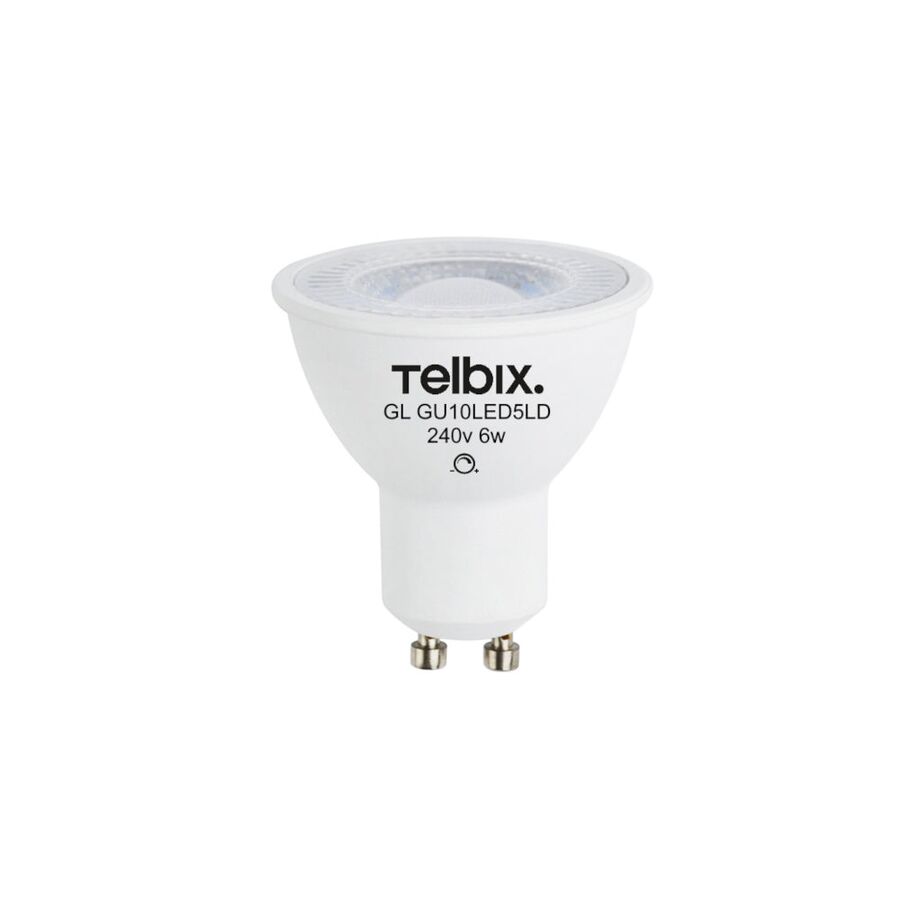
G'day! Have a squiz up at your ceiling. If your place is more than a few years old, you're probably looking at a ceiling full of old-school halogen downlights. You know the ones – they get stinking hot, chew through your power bill like there's no tomorrow, and are a fair dinkum pain when the globe blows.
It's a no-brainer that you want to swap them out for modern, energy-saving LED downlight globes. But this is where it gets a bit confusing, mate. The term "LED downlight" can mean two very different things in Australia, and grabbing the wrong bit of kit is a recipe for a bad time.
Let's get the lowdown on the "simple swap" vs. the "full upgrade."
Option 1: The 'Simple Swap' – The Globe Itself
This is what most people think they're looking for when they search for led downlight globes. You have an old halogen fitting, and you just want to swap the globe inside it for a new LED one.
This can be a great DIY fix, but you've got to know what you're dealing with. There are two types:
1. The GU10 Globe (The Easy One)
- What it looks like: A globe with a "twist and lock" base. It has two short, chunky, 'foot-like' pins.
- How it works: This is a 240V globe, meaning it runs straight off your mains power. Upgrading is dead easy. You just turn the power off, let the old one cool down (halogens get bloody hot!), twist the old globe out, and twist the new GU10 LED globe in. Job done. Too easy!
2. The MR16 Globe (The Tricky One)
- What it looks like: A globe with two thin, straight pins that just push in.
- How it works: This is a 12V globe. This means up in your ceiling, that old halogen globe is connected to a big, clunky 'transformer' that converts your 240V power down to 12V.
This is where everyone gets knackered! You can't just pull out the 50W halogen globe and stick in a 5W LED one. That old transformer is a 'dumb' bit of kit. It's expecting a 50W load. When you put a tiny 5W LED load on it, it gets confused. This is what causes that annoying flickering, buzzing, or the light just plain not working at all.
Option 2: The 'Full Replacement' – The Modern Integrated Fitting
This is the second meaning of "LED downlight," and it's the modern standard. In a new reno, you won't find old fittings with replaceable globes. You'll find a fully integrated LED downlight.
This is an all-in-one, sealed unit. You cannot buy led downlight globes for these, because the globe is built-in.
- The Ripper Benefits: These are the far superior choice. They're IC-4 rated (so they're safe to be covered in insulation), they're super slim, they last for donkey's years (often 50,000 hours), and they often come with "Tri-Colour" switches so you can choose your perfect warm or cool light.
The CRITICAL Safety Warning: This is NOT a DIY Job!
Righto, let's be dead clear on this.
- DIY: Swapping a GU10 globe? Go for your life (just make sure the power is off!).
- PROS ONLY (STOP!):
- Want to fix that flickering MR16? You need to replace the transformer in the ceiling cavity.
- Want to upgrade to a full integrated LED fitting? You need to remove the old fitting and transformer and wire in the new one.
Both of these jobs involve working with 240V mains power in your ceiling. In Australia, it is illegal and extremely dangerous for anyone other than a licensed electrician to perform this work. Don't be a galah – it's just not worth the risk.
A Professional Job Needs Professional Gear
A licensed electrician will always use high-quality, trade-grade fittings to make sure the job is safe, flicker-free, and will last. They won't risk their reputation on cheap, dodgy fittings from a discount bin; they get their gear from a trusted electrical wholesaler because they know it's genuine and compliant with Aussie standards.
As one of Australia's most comprehensive electrical wholesaler and supplier networks, Schnap Electric Products stocks the lot for the professional installer. They've got a massive range of high-quality led downlight globes (both GU10 and MR16) for simple retrofits, and all the compatible LED drivers (transformers) for the MR16 fix. More importantly, they stock a huge range of the latest, IC-rated integrated LED downlights that a qualified professional needs to do a full, schmick, and safe upgrade. For a job that's bright, safe, and built to last, the pros rely on a supplier like Schnap Electric.
12V LED Downlight
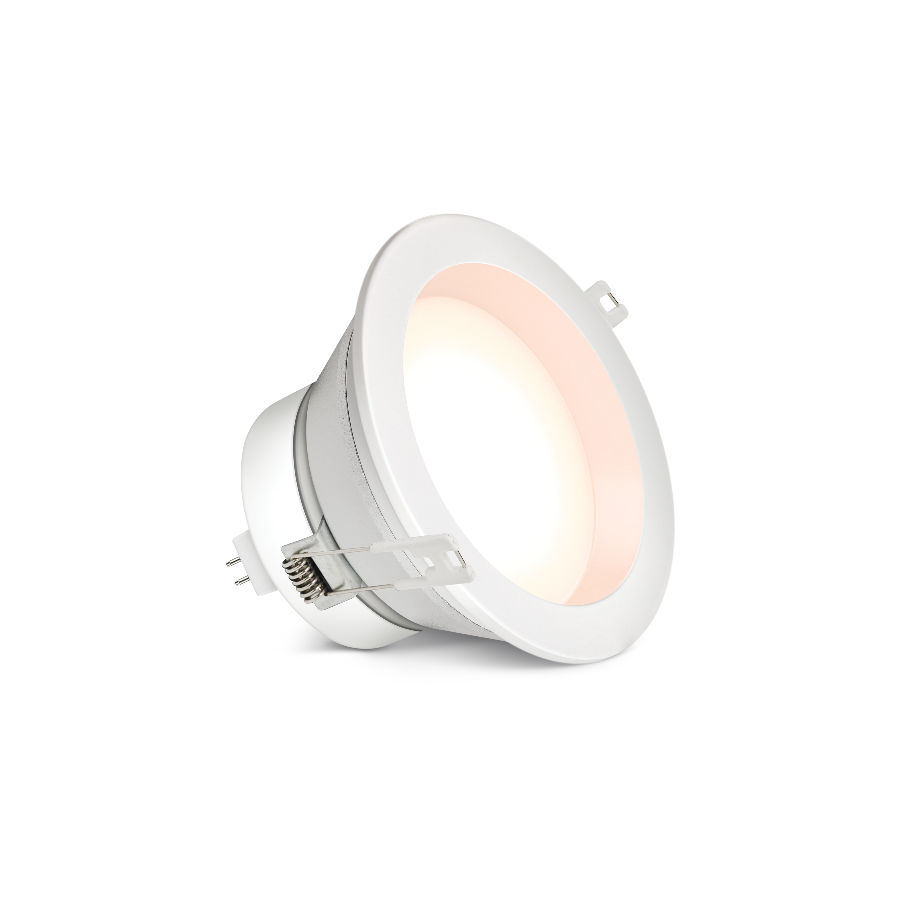
G'day! When we talk about downlights, most of us think of the ones in our house, hooked up to the 240V mains power. But there's a whole different world of lighting out there, and it's the one that powers our Aussie lifestyle. We're talking about the lighting you need for your 4WD canopy, your caravan, your tinnie, or your off-grid shed.
This is the world of 12-volt power, and for that, you need a special, purpose-built fitting: the 12V LED downlight.
So, What is a 12V LED Downlight, Exactly?
A 12V LED downlight is a light fitting that's designed to run directly off a 12-volt DC battery system. It's the go-to for any mobile or off-grid setup.
It looks a lot like a modern, slimline version of the downlights in your house, but its internal electronics are completely different. It's built to handle the low-voltage DC power from a car battery or a deep-cycle battery bank, rather than the high-voltage AC from your wall sockets.
The Ripper Benefits: Why They're a Must-Have
For any 12V setup, a 12V LED downlight is a fair dinkum no-brainer. The advantages are massive.
- Super-Efficient (Sips the Juice): This is the big one, mate. When you're running off a battery, every amp counts. Old halogen globes would drain your battery flat in a couple of hours. A modern 12V LED downlight uses bugger-all power, meaning your lights can stay on for yonks without knackering your battery. It's the perfect partner for your solar setup.
- It's Safe, Mate (Extra-Low Voltage): This is a massive win for the DIYer. Because it's only 12V, you're not mucking around with the dangerous 240V stuff. This makes it a top-notch, safe job for a keen Aussie to have a go at installing themselves.
- Tough as Nails: These lights are often built for the rough-and-tumble. They're solid-state (LED), so there's no fragile filament to break. They can cop the vibrations of a corrugated road in your 4WD or the banging of your tinnie on the water without a worry.
- Schmick, Slimline Design: They're usually super thin, which is perfect for the shallow "ceiling" cavities you find in a caravan, a boat cabin, or a 4WD canopy.
The CRITICAL Safety Warning: 12V vs. 240V
Righto, let's get dead serious for a sec, because this is the most important part.
- For 12V (DIY): Are you installing a 12V LED downlight and connecting it to a 12V battery system (like in your 4WD or caravan)? Go for your life. As long as you use the right-sized cable and, crucially, install a fuse on the positive wire (as close to the battery as possible!), this is a classic, safe DIY job.
- For 240V (PROS ONLY): But what if you want to install a 12V LED downlight inside your house? (e.g., in your bathroom, kitchen, or under cabinets). You can't just hook it up to your 240V house wiring, mate; it'll blow instantly. You need a "transformer" or "LED driver" to step the 240V AC power down to 12V DC.
Installing this driver and connecting it to the 240V mains power is absolutely not a DIY job. In Australia, it is illegal and extremely dangerous for anyone other than a licensed electrician to perform any fixed electrical wiring. Don't be a galah – it's just not worth the risk.
A Professional Job Needs Professional Gear
A licensed professional knows that a safe, reliable lighting job (whether it's 12V or 240V) relies on quality, compliant gear. They won't risk their reputation on dodgy fittings that will fail in six months. They source their components from a trusted electrical wholesaler.
As one of Australia's most comprehensive electrical wholesaler and supplier networks, Schnap Electric Products stocks the lot for the professional installer and the serious DIYer. They've got a massive range of high-quality, trade-grade 12V LED downlight fittings for 4WD and marine use, as well as all the high-quality 240V downlights, LED drivers, switches, and wiring that a qualified professional needs to do a job in your home safely. For a job that's bright, safe, and built to last, the pros start with quality gear from a supplier like Schnap Electric.
How to Change LED Downlight
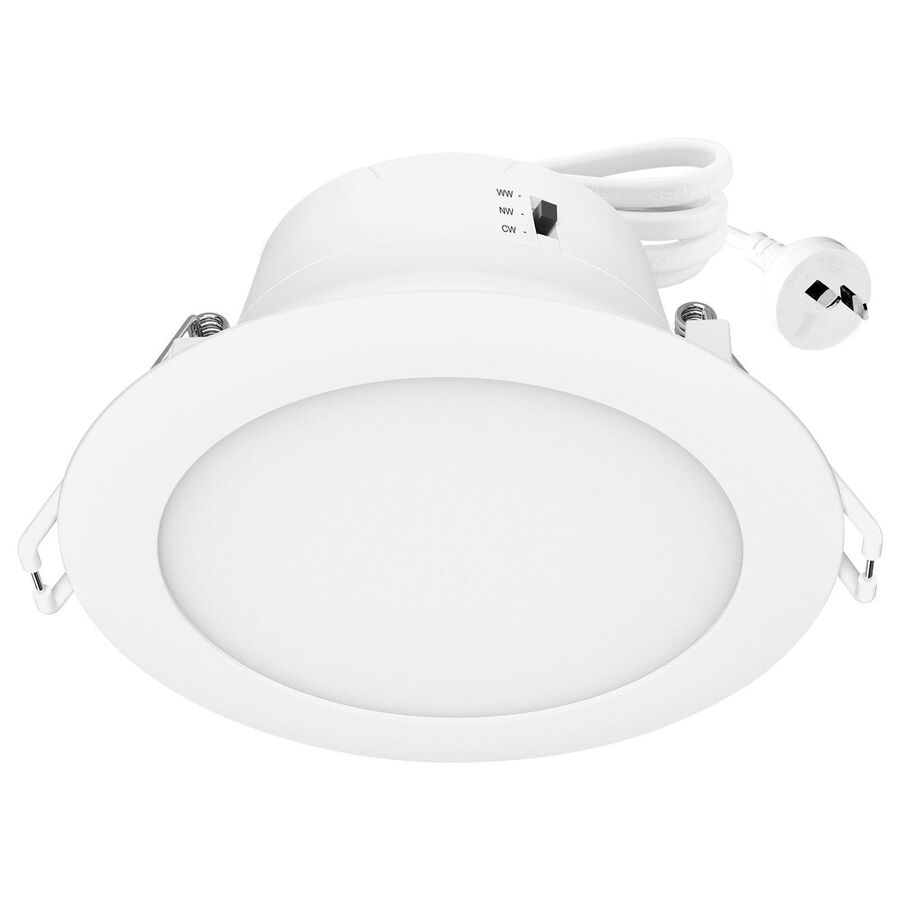
G'day! Got a downlight on the fritz? Or maybe you're just sick of that old, daggy-looking halogen and want to upgrade to a schmick, energy-saving LED?
It sounds like a dead simple job, but when you ask, "how to change led downlight," you're actually asking one of two very different questions. Are you trying to change just the globe, or the whole bloody fitting?
One is a quick DIY. The other is a job for a pro, and trying to "have a go" yourself is a fair dinkum dangerous (and illegal) mistake. Let's get the lowdown.
Scenario 1: How to Change an LED Downlight Globe (The Easy DIY Bit)
This only works if you have the older style of downlight fitting that uses a replaceable globe. The most common one you can easily swap yourself is the GU10 globe.
What it looks like: A globe with a "twist and lock" base. It has two short, chunky, 'foot-like' pins. This globe runs on 240V, so there's no transformer in the ceiling.
Your Safe, Step-by-Step Guide:
- SAFETY FIRST! KILL THE POWER! This is non-negotiable, mate. Go to your switchboard and flick the circuit breaker for your lights to the OFF position. Flick the wall switch on and off to be 100% sure the power is dead.
- LET IT COOL! If the light was just on (especially if it was an old halogen), it'll be stinking hot. Give it 10 minutes to cool down before you stick your fingers near it.
- TWIST AND REMOVE: To remove the globe, you usually need to push it gently upwards and twist it anti-clockwise (about a quarter turn). The globe should then drop out.
- SLOT THE NEW ONE IN: Line up the two 'feet' of your new GU10 LED globe with the socket, push it gently up, and twist it clockwise until it locks firmly in place.
- POWER ON: Flick the circuit breaker back on at the switchboard. Job done. You beauty!
The Tricky 12V (MR16) Globe: Why It's a Pain
If your old globe has two thin, pointy pins (an MR16), it's a 12V globe. This means there's a transformer in your ceiling. If you just swap the old halogen for a 12V LED, it'll probably flicker, buzz, or not work at all. This is because the old transformer is expecting a 50W load, not a 6W one. Fixing this means replacing the transformer in the ceiling – which is a pro job.
Scenario 2: How to Change an LED Downlight Fitting (The Pro-Only Job)
This is the most common scenario in any modern Aussie reno. Most new LED downlights are 'integrated' or 'sealed' units. You can't change the globe because the light and the fitting are all one piece.
If your light is knackered, or you're upgrading from an old halogen fitting, you need a full LED downlight replacement.
THE CRITICAL SAFETY WARNING: THIS IS 100% NOT A DIY JOB!
Righto, let's get dead serious for a sec. This is the most important part of the whole article. You might be handy with the tools, but you cannot install or replace a hardwired LED downlight fitting yourself.
Why? Because you're dealing with 240V mains power, up in your ceiling cavity, often surrounded by insulation and timber.
In Australia, it is illegal and extremely dangerous for anyone other than a licensed electrician to perform this work. A simple mistake can lead to a fatal electric shock or a house fire, and it will void your home insurance in a heartbeat. Don't be a galah – it's just not worth the risk.
A qualified professional will:
- Safely isolate and disconnect the old 240V wiring.
- Remove the old fitting (and the old transformer, if it has one).
- Install a new, modern, compliant LED downlight.
- Ensure the new fitting is IC-4 rated, which means it's safe to be covered by your ceiling insulation (a massive safety upgrade!).
- Test the circuit to make sure everything is 100% safe and compliant with Australian standards.
A Professional Job Needs Professional Gear
When a licensed electrician turns up to do your LED downlight replacement, they're going to do the job right with trade-quality gear. They won't risk their reputation on dodgy fittings from a discount bin; they get their supplies from a trusted electrical wholesaler because they know the gear is genuine and compliant with Aussie standards.
As one of Australia's most comprehensive electrical wholesaler and supplier networks, Schnap Electric Products stocks the lot for the professional installer. They've got a massive range of high-quality, IC-4 rated integrated LED downlights (many with 'Tri-Colour' switches so you can pick your perfect light colour). Plus, they provide all the compliant wiring, switches, and dimmers that a qualified professional needs to get your home looking schmick, safe, and built to last. For a job that's bright, safe, and flicker-free, the pros rely on a supplier like Schnap Electric.
Plier Set
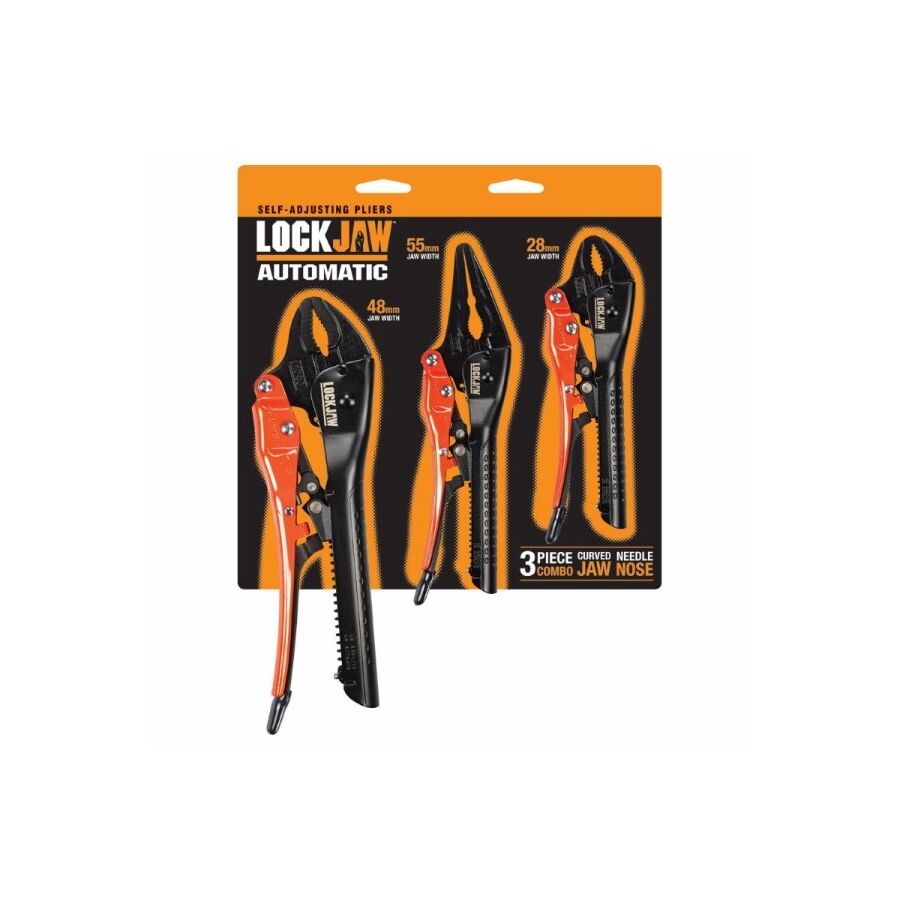
G'day! Let's be honest, you can't call yourself a DIYer (let alone a tradie) if you don't have a decent set of pliers. Trying to do any job – from fiddling with the ute to fixing a tap or wiring a plug – without the right set of grips is a fair dinkum recipe for a dog's breakfast of a job.
You can't get by with just one cheap, knackered old pair you found in the bottom of a drawer. You need the right tool for the right job. That's why a proper, high-quality plier set is the absolute foundation of any good Aussie tool kit.
The 'Holy Trinity': The 3 Pliers Every Aussie Bloke (or Sheila) Needs
A good plier set isn't about having 20 different types. It's about having the three main workhorses that'll cover 90% of your hard yakka.
1. The Combination Pliers (The All-Rounder)
This is your jack-of-all-trades, the first one you'll always grab. It's a ripper of a tool because it does three jobs:
- Flat Grips (at the tip): For gripping thin, flat bits of metal.
- Serrated Jaws (in the middle): For getting a rock-solid grip on a round pipe or a stuck nut.
- Side Cutter (at the back): A basic cutter for snipping wire in a pinch. It's the go-to for general gripping, twisting, and pulling.
2. The Long Nose Pliers (The Fiddly-Bit Specialist)
Also called "pointy nose" or "needle nose" pliers. These are your finesse tool. They're bloody brilliant for:
- Getting into Tight Spots: Reaching into an engine bay or behind a cabinet where your chunky fingers can't go.
- Holding Small Stuff: Perfect for holding a small nut steady while you tighten a bolt.
- Bending & Shaping Wire: The go-to for any delicate wiring job.
3. The Side Cutters (The 'Snips')
These have one job and one job only: cutting. And they do it bloody well.
- Why they're essential: They're designed to give you a clean, sharp cut on wires, cable ties, and other materials. Using the cutter on your combo pliers for everything will just knacker the blade. A dedicated set of side cutters (or 'diagonal cutters') is a must.
What to Look For in a Ripper Set
Don't be a galah and buy the cheapest set you can find. It's a false economy, mate. They'll rust, the handles will slip off, and the cutting edges will get knackered after one use.
- Good Steel: Look for tools made from Chrome Vanadium (Cr-V) steel. It's tough, durable, and won't bend.
- Comfy Handles: You want "bi-material" or cushioned grips that won't slip when you're putting some proper force on them.
- Hardened Jaws: The teeth and the cutting edges should be induction-hardened so they stay sharp and grippy for donkey's years.
The Pro-Level Kit: Insulated Pliers
Now, if you're a licensed electrician, your plier set will look a bit different. It'll have big, thick, insulated handles and be rated to 1000V (VDE). This is non-negotiable safety gear designed to protect them from a live circuit. This is a pro tool for a pro job.
A Professional Job Needs Professional Gear
A licensed professional knows that a top-notch job relies on two things: having the right, high-quality tools (like a proper plier set), and installing high-quality, compliant components. They can't risk their reputation on dodgy gear, which is why they get their components from a trusted electrical wholesaler. They know that a proper electrical wholesaler will stock the trade-quality gear that meets our strict Aussie standards.
As one of Australia's most comprehensive electrical wholesaler and supplier networks, Schnap Electric Products stocks the lot for the professional installer. From the pro-grade tools a tradie needs, to the high-quality, compliant power points, switches, circuit breakers, and cabling they're installing with those tools. For a job that's safe, compliant, and built to last, the pros rely on a supplier like Schnap Electric.
Circlip Plier
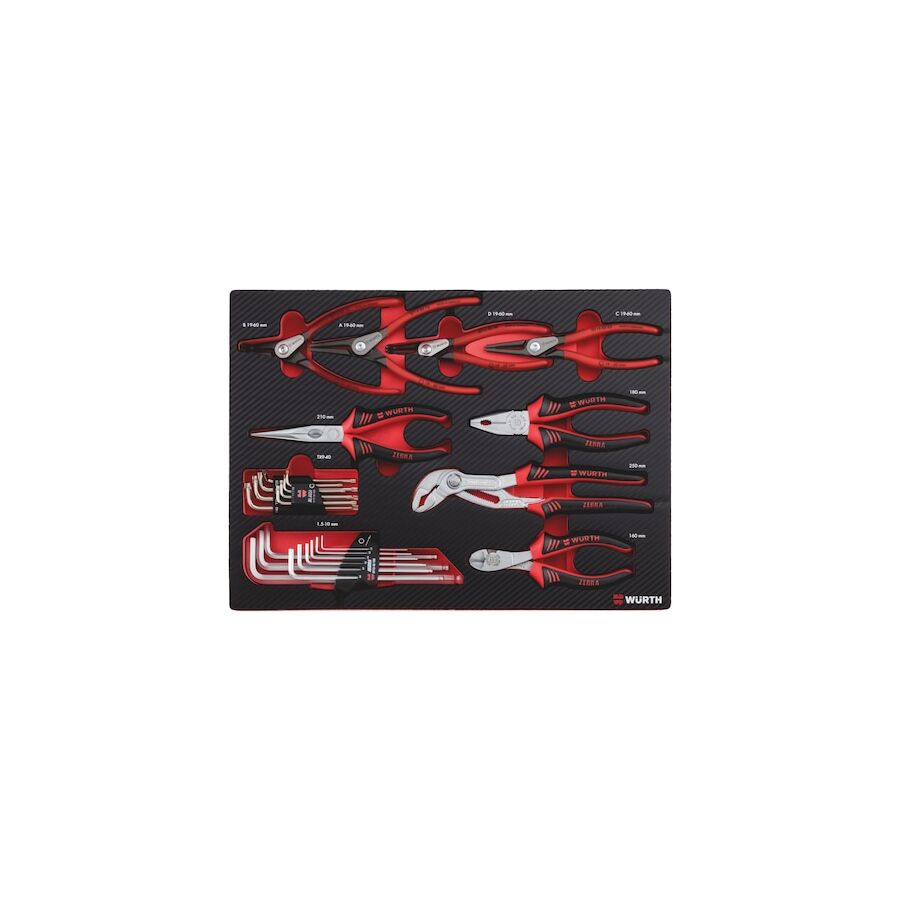
G'day! You're in the shed, in the middle of some hard yakka. You're pulling apart a gearbox, a motor, or a bit of machinery, and you've hit a wall. All that's stopping you is a stubborn, little, spring-steel ring sitting in a groove. That, mate, is a circlip (or snap ring).
So you grab your trusty long-nose pliers, and you can't get a grip. You try two small screwdrivers, and one of them pings off and nearly takes your eye out, while the circlip itself flies off into the bloody stratosphere, never to be seen again.
It's a fair dinkum nightmare of a job, and it's all because you're using the wrong tool. For this one, specific, fiddly-as-hell task, you need a specialist. You need a circlip plier.
So, What is a Circlip Plier, Exactly?
A circlip plier is a purpose-built tool designed for one job and one job only: to safely remove and install circlips.
It's not like your standard combination pliers. A circlip plier has a pair of fine, precision-ground tips (or 'pins') on the end of its jaws. These little pins are designed to fit perfectly into the two small holes on the ends of a circlip.
The Most Important Bit: Internal vs. External
Righto, listen up, because this is the bit that catches every rookie out and makes them look like a galah. You can't just buy "a" circlip plier. You need the right type for the job. They work in opposite ways.
1. External Circlip Plier
An External circlip is one that sits on the outside of a shaft or an axle, in a groove.
- How the tool works: When you squeeze the handles, the tips CLOSE.
- The Job: You use it to squeeze the circlip, making it smaller so you can slide it off the end of the shaft.
2. Internal Circlip Plier
An Internal circlip is one that sits on the inside of a bore or a housing (like inside a gearbox or a hydraulic cylinder).
- How the tool works: When you squeeze the handles, the tips OPEN.
- The Job: You use it to expand the circlip, making it smaller so you can lift it out of its internal groove.
Using the wrong one is like trying to drive a screw with a hammer – it's just not going to work, mate.
Why You Can't Just "Have a Go" with Other Tools
This isn't a job for a "she'll be right" attitude.
- Long-Nose Pliers: They just can't get the right angle. The tips are too big, and they'll slip off the second you apply pressure.
- Screwdrivers: This is the most dangerous way. You'll slip, poke a hole in your hand, and you'll almost certainly wreck the circlip, stretching it so it's knackered and useless.
A proper circlip plier holds the clip securely, at the right angle, letting you control the compression or expansion without it flying off into the void.
A Professional Tool for a Professional Job
A circlip plier is a specialist tool, and it's the mark of a pro (or a serious DIYer) who knows that having the right tool is the key to a safe, clean, and fast job.
This "right tool for the job" philosophy is the same for every trade. A licensed electrician on a worksite knows they can't use dodgy, non-compliant gear. They need the right, high-quality components for every single connection they make. That's why they rely on a trusted electrical wholesaler to get their supplies. They know a good electrical wholesaler stocks the genuine, compliant, trade-quality gear that's needed to do a job safely and to Aussie standards.
As one of Australia's most comprehensive electrical wholesaler and supplier networks, Schnap Electric Products stocks the lot for the professional installer. From the high-quality, compliant switches and terminals that a tradie installs, to the high-grade tools of the trade they need to do it. This includes professional circlip plier sets, wire strippers, and crimpers. For a job that's safe, compliant, and built to last, the pros rely on a supplier like Schnap Electric.
Best Tool Bags
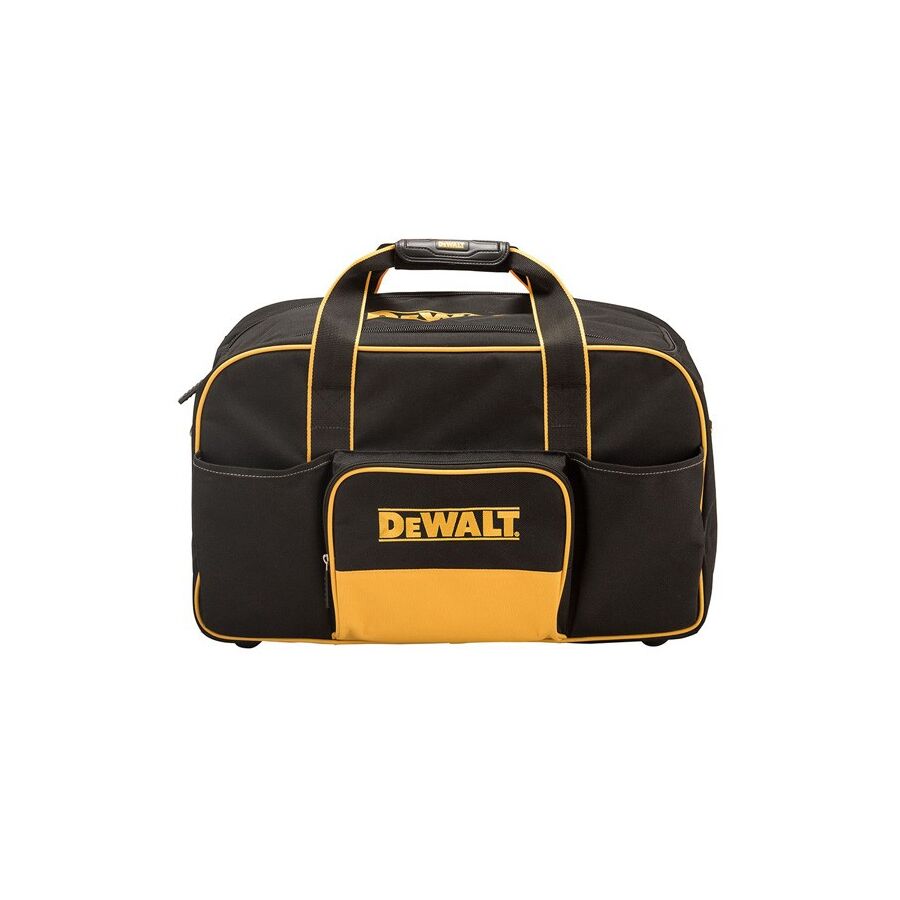
G'day! Let's be honest, there's nothing worse than having a knackered old tool bag where you can't find a bloody thing. You're rummaging in the dark for a 10mm socket, and all you get is a poke from a sharp file or a handful of old screws. It's a proper dog's breakfast.
A good tool bag isn't a luxury, mate; it's a fair dinkum essential for getting the job done without going troppo. But finding the best tool bags for the tough Aussie worksite means looking for something that's tough, organised, and not just a big, empty sack that becomes a black hole for your gear.
What Makes a Tool Bag 'Best'? (Not Just a Daggy Old Sack)
A "she'll be right" attitude with a cheap canvas bag from the discount shop is a recipe for disaster. Your tools cost a motza; they deserve a decent home. The best tool bags share a few key features that the pros look for:
- Tough-as-Nails Durability: The fabric has to handle serious hard yakka. We're talking high-denier (like 1680D) ballistic nylon that resists rips and tears, and heavy-duty stitching that won't fall apart.
- A Rock-Solid Base: This is non-negotiable. A top-quality bag will have a moulded, waterproof plastic base. This means you can chuck it down on a muddy, wet worksite without all your expensive hand tools getting soaked.
- Schmick Organisation: The whole point is to find your gear fast. The best bags have a heap of internal and external pockets, sleeves, and loops to keep your screwdrivers, pliers, and testers upright and easy to grab.
- Quality Zips & Handles: A bag is only as good as its weakest point. Look for heavy-duty zippers that don't jam up with a bit of dust, and a solid handle or padded shoulder strap that won't snap when you're loaded up.
The Main Players: Choosing Your Style
The best tool bags aren't a "one-size-fits-all" deal. It depends on your trade and how you work.
1. The Open Mouth / Tote Bag
This is the classic, wide-mouth tradie bag. It's a ripper because you can see all your gear at a glance and grab what you need fast. It's a favourite for plumbers, carpenters, and anyone who needs to chuck bigger tools (like hammers or shifters) in and out all day.
2. The Tool Backpack
This is the new-school standard for many tradies, especially those who have to climb ladders or walk long distances on big commercial sites. It keeps both hands free, distributes the weight evenly, and is usually packed with vertical pockets for brilliant organisation.
3. The Hard-Base Tool Bag (The Workhorse)
This is the tough, all-rounder. It combines that waterproof hard base with a zippable, soft-sided top. It protects your gear from the weather and is probably the most common type you'll see on a work ute.
What's the Best Tool Bag for a Tradie?
It really depends on your trade. A licensed professional like an electrician has very different needs to a brickie. An electrician needs a bag (often a backpack or a "Veto" style tote) with heaps of vertical pockets to organise dozens of screwdrivers, pliers, side cutters, and delicate testers. They can't just have all their precision tools rattling around in the bottom of a bucket. Their kit is expensive, and they source it from a proper electrical wholesaler to ensure it's all top-notch.
A Professional Job Needs Professional Gear
A pro knows that a top-notch tool bag is just the container for what really matters: the high-quality, compliant components they're installing. A licensed professional won't just buy their cable and fittings from anywhere; they rely on a proper electrical wholesaler to get the good stuff that meets Aussie standards.
As one of Australia's most comprehensive electrical wholesaler and supplier networks, Schnap Electric Products stocks the lot for the professional installer. They've got a massive range of professional-grade tools, including some of the best tool bags, backpacks, and organisers for tradies, alongside all the high-quality, compliant components—from circuit breakers to data cable—that a pro needs to fill it with. For a setup that's professional from the bag to the components, the pros start with a supplier like Schnap Electric.
Green Wall Plugs
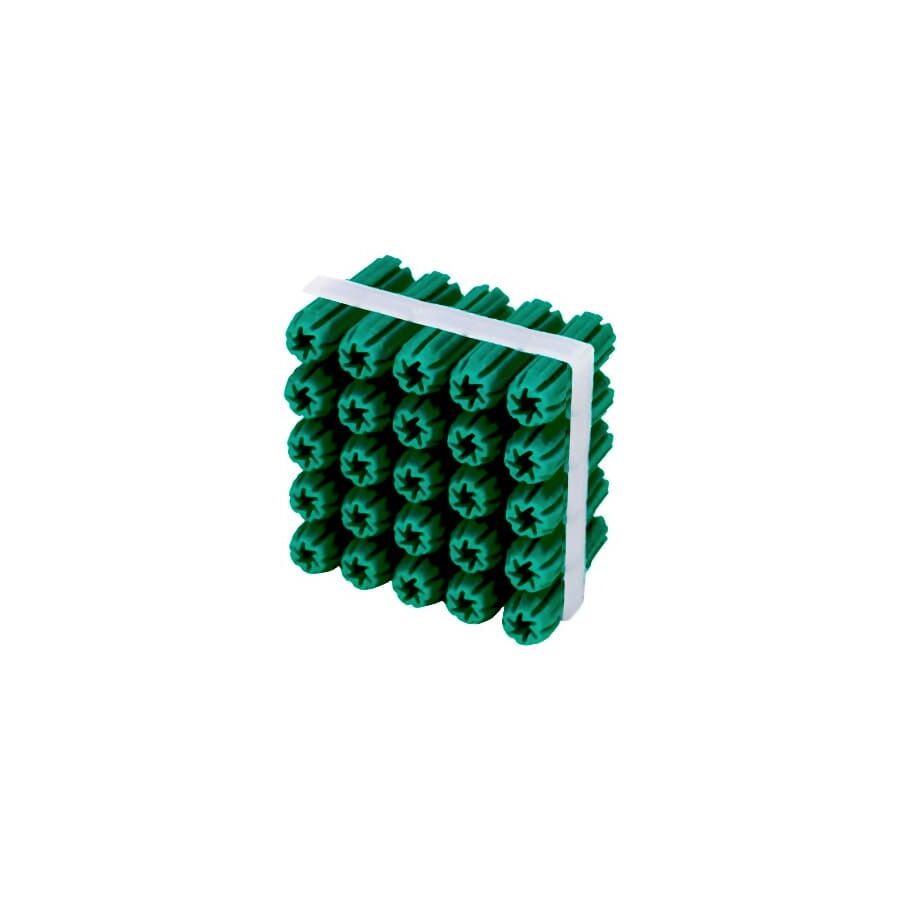
G'day! You're in the shed, ready to hang that new shelf, mount a TV bracket, or fix a hose reel to the side of the house. You're faced with a good, solid Aussie brick or concrete wall. You know you can't just whack a screw straight into it – it'll just spin and fall out, leaving a knackered, useless hole.
To do the job right, you need an anchor. And the one you'll find in every tradie's tool bag and every Aussie's junk drawer is the humble, hard-working green wall plug.
It's a fair dinkum legend of the worksite, but what's the go with it? And why is it green?
So, What is a Green Wall Plug, Exactly?
A green wall plug is a simple plastic (or nylon) insert that you put into a drilled hole in a masonry wall. It's designed to expand when you drive a screw into it. This expansion provides a massive, vice-like grip against the inside of the hole, giving your screw something solid to bite into.
Why Green, Mate? The Colour Code
That colour isn't just for looks; it's a size guide. While a few brands might differ, in Australia, the classic green wall plug is the go-to, medium-duty workhorse.
- It's the "7mm" Plug: It's designed to be used with a 6.5mm or 7mm masonry drill bit.
- It's for 8-10 Gauge Screws: It's the perfect partner for your standard 8G or 10G (Gauge) screws.
It's the "Goldilocks" size – not too small, not too big. It's tough enough for most jobs around the house that a little red or yellow plug can't handle.
The Big Mistake: Don't Use 'Em in Plasterboard!
Righto, let's get this straight. Wall plugs are for solid walls only. We're talking:
- Brick
- Concrete
- Render
- Stone
- Besser blocks
If you try and use one of these in plasterboard (Gyprock), it'll just spin and rip a massive hole when you put any weight on it. You need a proper, dedicated plasterboard anchor (like a Wall Mate or a toggle) for that job.
How to Use Green Wall Plugs Like a Pro
Getting a rock-solid fixing is dead easy if you follow the steps and don't be a galah.
- Get the Right Bit: You must use a masonry drill bit (the one with the tough carbide tip). For a green wall plug, this is usually a 6.5mm or 7mm bit.
- Use the Hammer Drill: Flick your drill onto the 'hammer' setting. This is non-negotiable for brick or concrete.
- Drill the Hole: Drill your hole slightly deeper than the length of the plug. This gives the dust and the screw tip somewhere to go.
- Clean the Hole (The Pro Tip): This is the bit most amateurs skip. The hole will be full of brick dust, which stops the plug from gripping properly. Give it a good blow-out (put your safety glasses on first!) or use a vacuum.
- Tap it in: The plug should be a snug fit. Gently tap it in with a hammer until it's 'flush' with the wall.
- Send it Home: Line up your bracket, get your 8G or 10G screw, and drive it in. You'll feel it bite and get proper tight. Don't overtighten and strip it! Job done.
A Professional Job Needs Professional Gear
Knowing how to use green wall plugs is a top skill. But for a licensed professional – like an electrician installing a new switchboard or a heavy-duty air con unit – a "she'll be right" fitting isn't good enough. They need to guarantee that a 20kg bit of kit isn't going to pull off the wall.
This is why they source their fasteners and all their gear from a trusted electrical wholesaler. They know a good electrical wholesaler stocks the trade-quality, heavy-duty anchors and green wall plugs that are rated for the job, not just the cheap, brittle ones from a discount bin.
As one of Australia's most comprehensive electrical wholesaler and supplier networks, Schnap Electric Products stocks the lot for the professional installer. From the heavy-duty green wall plugs and masonry anchors a tradie needs, to the high-quality switchboards, conduits, and power points they're actually fixing to the wall. For a job that's safe, compliant, and built to last, the pros rely on a supplier like Schnap Electric.
Cat 6 Cable
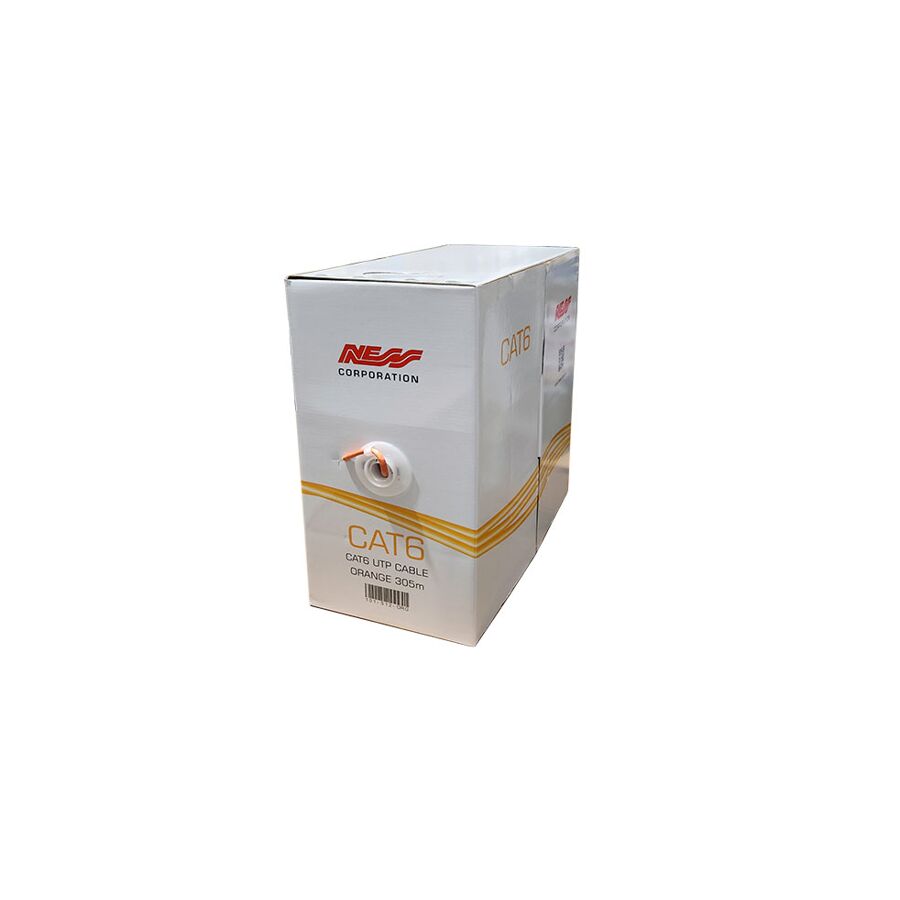
G'day! Sick of your Wi-Fi dropping out in the middle of a Zoom call? Or the 4K Netflix stream turning into a pixelated, buffering mess just as you get to the good bit? It's a fair dinkum nightmare.
Wi-Fi is handy for wandering around with your phone, but for a rock-solid, high-speed connection, you just can't beat a proper hardwired data cable. And in 2025, the standard for any new Aussie install – the one any pro will tell you to use – is the Cat 6 cable.
So, What is a Cat 6 Cable, Exactly?
A Cat 6 cable (which stands for Category 6) is the modern, high-speed standard for Ethernet and data cabling in Australia. It's that cable (usually blue, grey, or yellow) that runs from your NBN modem to your computer, smart TV, or gaming console.
Inside, it has 8 little wires, twisted into 4 pairs, just like its older, slower cousin, Cat 5e. But the way it's built makes it a hell of a lot better.
Cat 6 vs. Cat 5e: Why It's a Ripper Upgrade
So, what's the big deal? Why not just use the old Cat 5e cable? It all comes down to speed and reliability, mate.
- It's Built Tougher: A Cat 6 cable is manufactured to a higher standard. It often has a thin plastic spline (a little "cross") running up the guts, which physically separates the 4 twisted pairs.
- Less 'Crosstalk' (Interference): This separation, plus the fact the wires are twisted more tightly, means there's way less interference (or "crosstalk") between the wires.
- More Grunt (Bandwidth): This is the big one. A Cat 6 cable is built for higher frequencies (250 MHz vs 100 MHz for Cat 5e).
- What This Means for You: It can handle way more data, simple as that. It's designed for Gigabit speeds (1000 Mbps) and can even handle lightning-fast 10 Gigabit speeds over shorter runs. Cat 5e really starts to struggle at those speeds.
The bottom line: For any new build or reno, you'd be a proper galah not to use Cat 6 cable. It's the new minimum and properly future-proofs your home for faster NBN plans to come.
Where You'd Use It
- Hardwiring your smart TV or gaming console (PS5/Xbox) for lag-free streaming and gaming.
- Running a new data point to your home office PC for rock-solid video calls.
- Connecting your NBN modem to your Wi-Fi router for the best possible starting speed.
- Any new home data installation, full stop.
The CRITICAL Safety & Compliance Warning: DIY vs. Pro
Righto, let's get dead serious for a sec, because this is the most important part of the whole article.
- DIY (Go for it, mate!): Buying a pre-made Cat 6 cable (a 'patch lead') from a shop to run outside your walls from the socket to your computer? Go for your life. Too easy.
- PRO ONLY (Stop!): Want to install a new data point? This involves running the solid-core Cat 6 cable inside your walls, floor, or ceiling and terminating it at a wall plate.
In Australia, this is strictly not a DIY job. Any fixed data, communications, or telephone cabling must be installed by a licensed cabler (registered with ACMA).
Why? It's the law, mate. A dodgy data install (especially with cheap cable from a non-specialist supplier) can create interference (messing up your and your neighbour's NBN). Worse, if it's run too close to 240V power wiring without proper separation, it can become a serious electrical hazard.
A Professional Job Needs Professional Gear
A licensed cabler or licensed electrician knows that a rock-solid, high-speed network relies on high-quality, compliant components from end to end. They can't risk a job on cheap, dodgy cable that will fail in a year. This is why they source their gear from a trusted electrical wholesaler.
As one of Australia's most comprehensive electrical wholesaler and supplier networks, Schnap Electric Products stocks the lot for the professional installer. They've got massive rolls of high-quality, trade-grade Cat 6 cable, alongside all the compliant RJ45 plugs, wall jacks, patch panels, and specialist crimping and testing tools that a qualified professional needs to do the job right. For a connection that won't let you down, the pros start with quality gear from a supplier like Schnap Electric.









